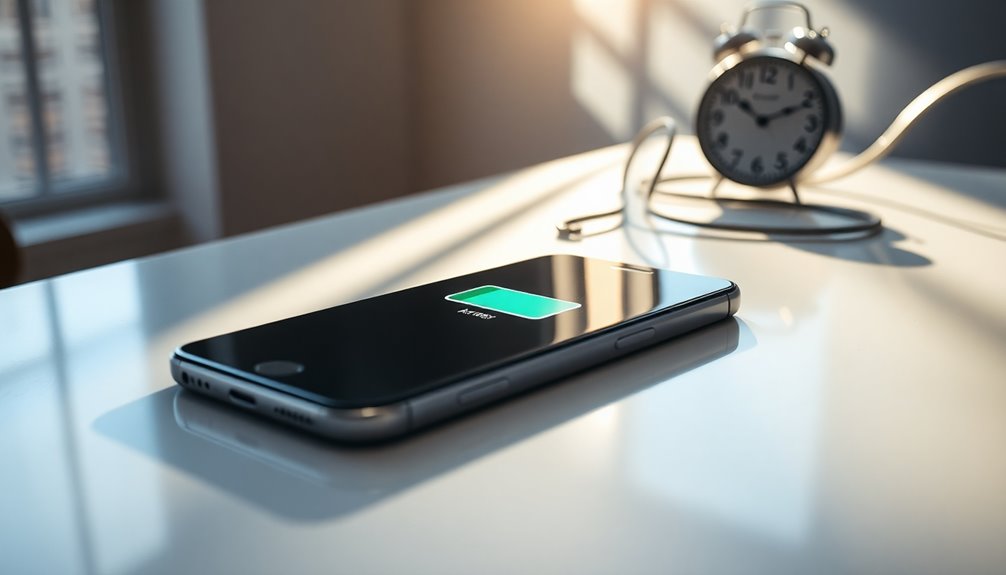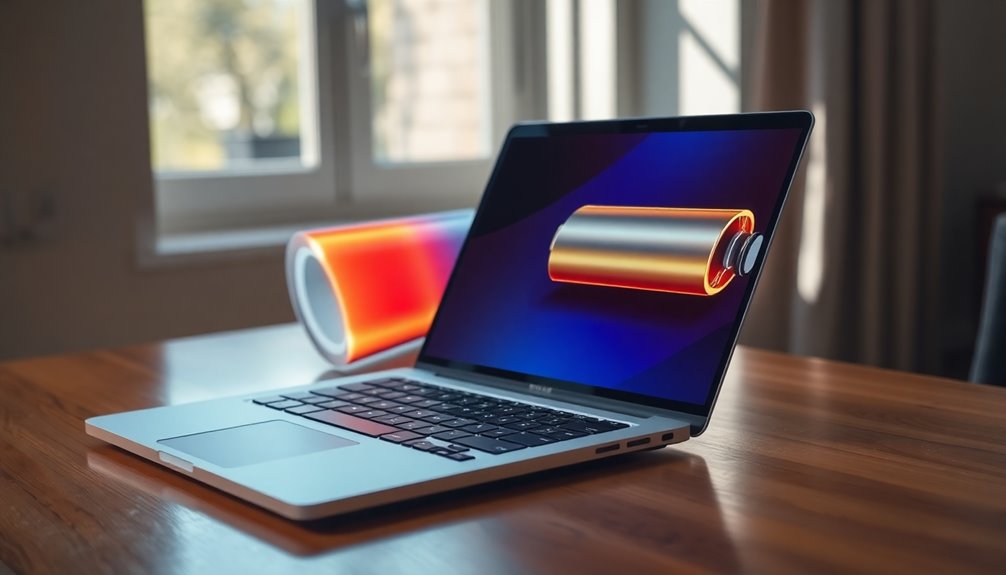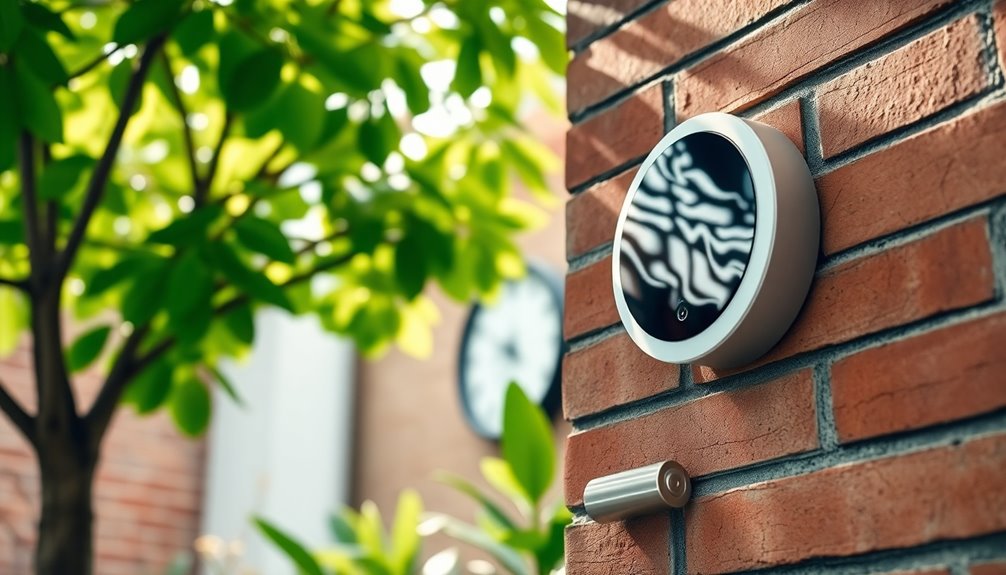iPhone batteries typically last around 2-3 years, translating to about 500 charge cycles before you notice a significant decline in capacity. You'll see about a 1% drop in battery health each month, so keeping an eye on it is essential. If it drops to 80%, Apple recommends a replacement for peak performance. Usage patterns, like gaming or excessive background apps, can speed up the degradation. To extend your battery's lifespan, avoid charging to 100% all the time and be mindful of extreme temperatures. Want to uncover more tips to maximize your iPhone battery's longevity?
Key Takeaways
- iPhone batteries typically last around 2-3 years, with an average monthly decline in health of about 1%.
- Battery health drops significantly in the first three months, usually from 100% to 98%.
- Apple recommends replacing batteries when health reaches 80% for optimal performance.
- Charging to 100% regularly can accelerate degradation; aim for 80-90% for longevity.
- Newer models like the iPhone 15 achieve 80% capacity after 1,000 charge cycles, extending overall lifespan.
Battery Lifespan Overview
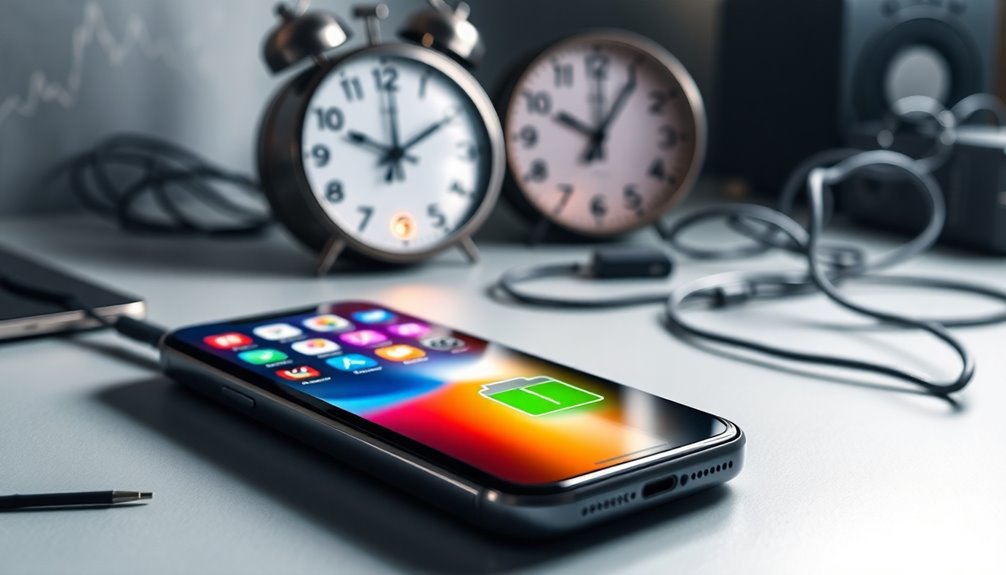
When you use your iPhone daily, it's important to understand that its battery lifespan typically hovers around two years.
During this time, you'll notice a gradual decline in battery health. Under average usage conditions, your battery health can decrease by about 1% each month.
Initially, it might drop from 100% to 98% within the first three months, which is considered normal.
Apple recommends replacing your battery once its health reaches 80% to keep your device performing efficiently.
You should regularly monitor your battery health by going to Settings > Battery > Battery Health.
Doing this will help you stay aware of your battery's charge cycles and maintain its lifespan for as long as possible.
Factors Affecting Battery Life
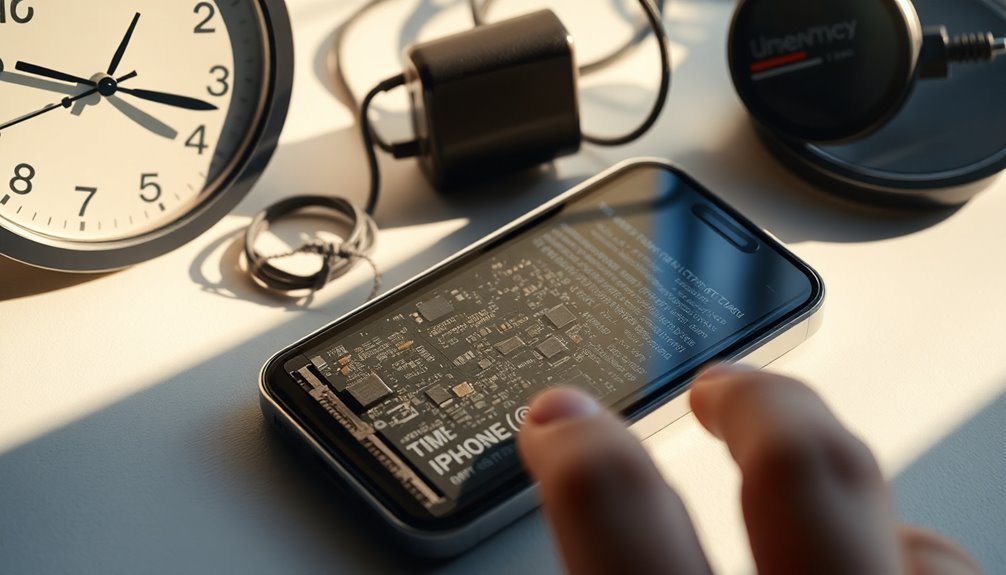
Your iPhone's battery life can be markedly affected by how you use and charge your device.
Frequent full cycle charges and extreme temperatures can accelerate degradation, leading to a shorter lifespan.
Usage Patterns Impact Degradation
Since usage patterns play a crucial role in battery degradation, understanding how your habits impact battery life can help you make informed choices.
Your iPhone's battery health can decline about 1% monthly, so consider these factors:
- Power-intensive activities like gaming or using GPS can drain your battery faster.
- Frequent full charge cycles lead to wear, reducing overall lifespan.
- Allowing your battery to drop below 20% regularly accelerates degradation.
- Extreme temperatures can negatively affect performance and longevity.
Charging Habits and Lifespan
While many people think charging their iPhone to 100% is the best practice, it can actually speed up battery degradation. To improve your battery health, consider using the Charge Limit feature to keep your charge between 80-90%.
Full charge cycles contribute considerably to wear, so frequent partial charging is better for longevity. Additionally, avoiding extreme temperatures during charging is essential; excessive heat can damage the battery while cold can drain it faster.
When storing your iPhone, aim for around 50% charge to prevent unnecessary drain.
Finally, regularly updating your iOS can enhance battery management, ensuring your device operates efficiently and prolonging its lifespan.
Adopting better charging habits can make a big difference!
Environmental Conditions Influence Battery
Environmental conditions play an essential role in your iPhone's battery performance, as extreme temperatures can greatly impact its health.
To guarantee ideal battery health and extend the lifespan of your iPhone, consider these factors:
- Heat: Excessive temperatures can damage your battery.
- Cold: Extreme cold can drain your battery faster.
- Charging Habits: Avoid charging while in protective cases to prevent overheating.
- Storage: Keep your iPhone around 50% charge when storing it for long periods.
Normal Battery Degradation
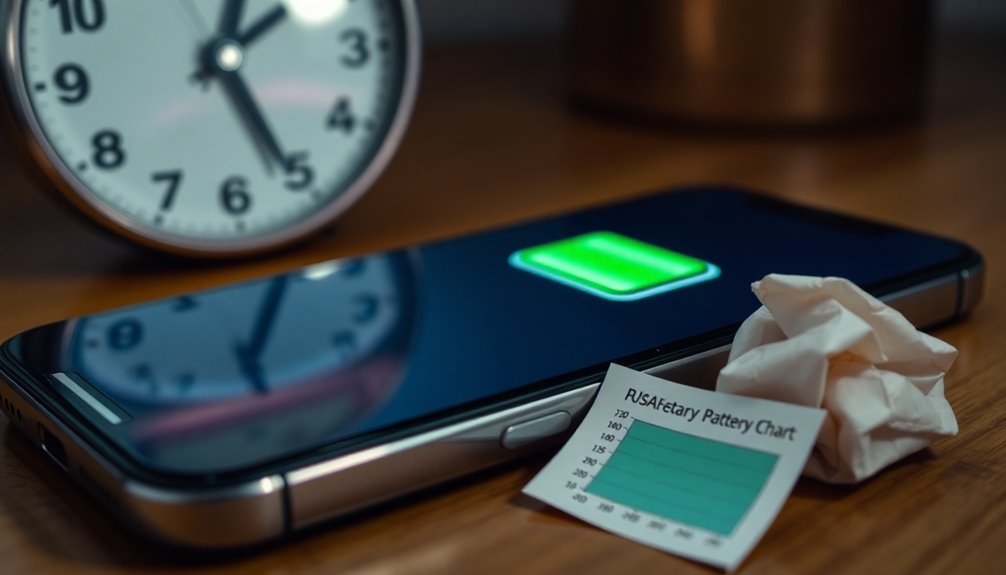
As you use your iPhone, you'll notice normal battery degradation over time.
Typically, you might see a monthly percentage drop of around 1%, influenced by how often you fully charge your device.
Understanding these patterns can help you manage your battery's health more effectively.
Monthly Percentage Drop
Understanding how your iPhone's battery health declines is essential for managing expectations. On average, you can expect about a 1% drop in battery health each month with typical usage. This is a normal degradation process for lithium-ion batteries.
Here are some factors influencing this monthly percentage drop:
- Usage habits: Heavy app usage can accelerate degradation.
- Charge cycles: Regularly charging from 0% to 100% can impact health.
- Temperature: Extreme heat or cold can affect battery performance.
- Background activity: Apps running continuously drain the battery faster.
Don't be alarmed by these gradual decreases; they reflect the natural aging of your battery.
Keeping track of your battery health helps guarantee you stay informed about its performance over time.
Full Cycle Charges
Every iPhone user should be aware of how full cycle charges affect battery health. A full cycle charge means you've used 100% of your battery's capacity, no matter how many partial charges it took to reach that point.
Under ideal conditions, iPhone batteries generally retain about 80% of their original capacity after around 500 full charge cycles, which translates to roughly two years of average use. Normal battery degradation happens at about 1% per month, leading to gradual capacity loss over time.
Don't worry if you notice initial drops in battery health—it's common for users to see changes from 100% to 98% in the first three months. Just remember, variability in the number of charge cycles is expected based on your individual usage.
Usage Patterns Impact
Your usage patterns play a considerable role in how quickly your iPhone's battery degrades over time. On average, you can expect about a 1% decline in battery health each month, leading to a lifespan of around 2-3 years.
Consider how you use your device:
- Frequent full charge cycles
- Heavy app usage
- Constant screen-on time
- Regularly using battery-draining features
These habits impact your battery lifespan greatly. In the first three months, your battery health typically drops from 100% to 98%, which is normal.
To maintain ideal battery health, monitor your usage through Settings > Battery > Battery Health, and adjust your habits to prolong your iPhone's longevity.
Common User Concerns
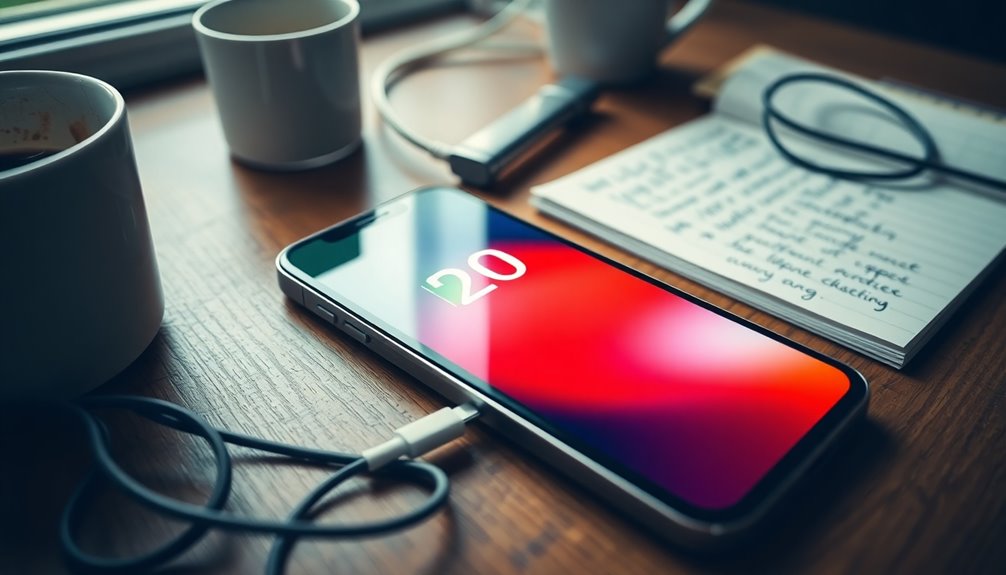
How can you tell if your iPhone's battery health is declining too quickly? If you notice a drop from 100% to 99% within a few months, don't panic. This decline is normal and often falls within expected patterns.
Many users question whether a drop from 95% indicates a warranty issue or a significant problem. Generally, a 1% decline per month under average usage reflects normal battery performance.
However, if you experience rapid health drops, especially within the first year, it's understandable to feel anxious. Community feedback often reassures you that gradual decreases in battery health are expected.
Keep in mind that these changes won't necessarily mean your battery lifespan is compromised or that you need a replacement immediately.
Effective Battery Maintenance
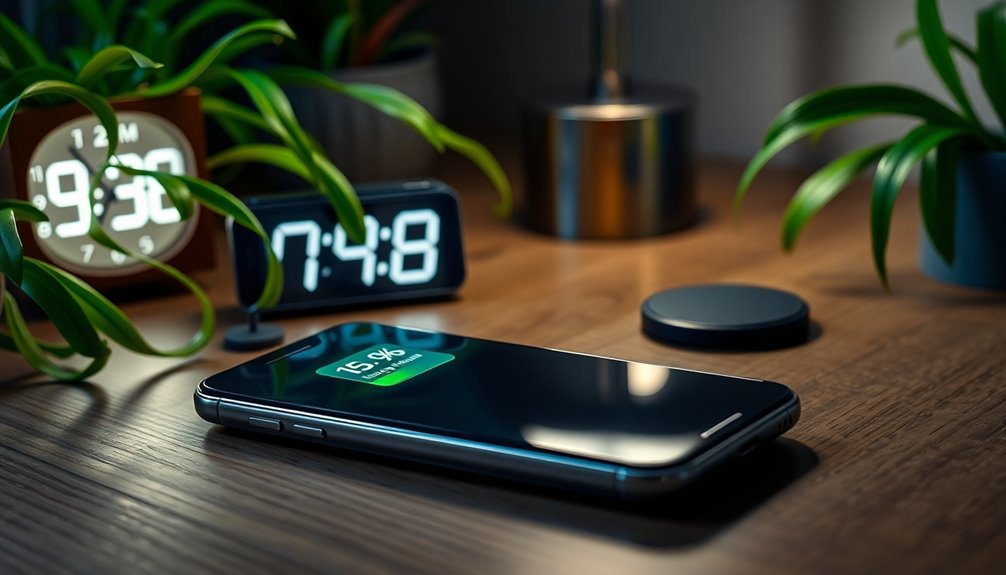
Maintaining your iPhone's battery health is just as important as understanding its decline. By practicing effective battery maintenance, you can greatly extend your battery lifespan.
Here are some essential tips:
- Avoid extreme temperatures—both heat and cold can harm battery health.
- Regularly update your iOS for improved energy efficiency and performance.
- Limit background app refresh to reduce battery strain.
- Use low power mode when your battery's running low to conserve energy.
Charging your iPhone with certified chargers also guarantees safe practices, helping sustain battery health and longevity.
Replacement and Support Options
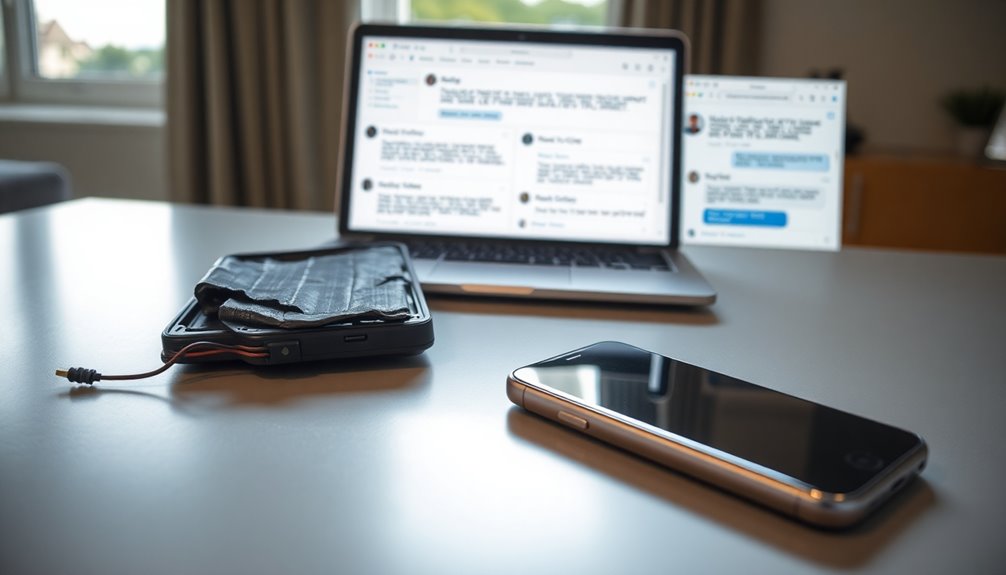
When your iPhone battery needs replacing, Apple offers a straightforward process at their retail locations.
You'll benefit from warranty coverage for defective batteries, and even out-of-warranty options are available for a fee.
To guarantee you're getting the best service, it's smart to reach out to authorized service providers for battery health checks and replacements.
Battery Replacement Process
If you're considering a battery replacement for your iPhone, Apple makes the process straightforward and accessible. You can easily keep your device in top shape by following these steps:
- Check your battery health through Settings > Battery > Battery Health.
- Schedule an appointment via the Apple Support app or website.
- Visit an Apple retail location for genuine parts and peak performance.
- Consider out-of-warranty options if your battery's past the one-year warranty.
Apple provides excellent support, ensuring you have access to quality service.
Regularly monitoring your battery health helps determine when you need a replacement, ensuring your device lasts longer and runs efficiently.
Don't wait until performance suffers—act when necessary!
Warranty Coverage Details
Understanding warranty coverage is essential to managing your iPhone's battery needs effectively.
Apple offers a one-year warranty that covers defective batteries, which is extended to two years in Turkey. If your battery runs into issues after this period, you can still opt for out-of-warranty battery service for a fee.
It's important to use Apple Authorized Service Providers for any battery replacements. This guarantees you receive a genuine Apple battery and accurate health data, helping maintain your device's performance.
Regularly checking your battery health can alert you to when service is needed, allowing you to address problems before they escalate.
Authorized Service Providers
While managing your iPhone's battery, it's crucial to know that Apple Authorized Service Providers are your best option for replacements and support.
They guarantee your battery health remains ideal by using genuine parts. Here's what you can expect:
- Expert technicians who understand iPhone systems.
- Convenient scheduling through the Apple website or Support app.
- Standard warranty coverage for defective batteries, extending to two years in Türkiye.
- Out-of-warranty options available, so you can restore your device's performance anytime.
Battery Technology Explained
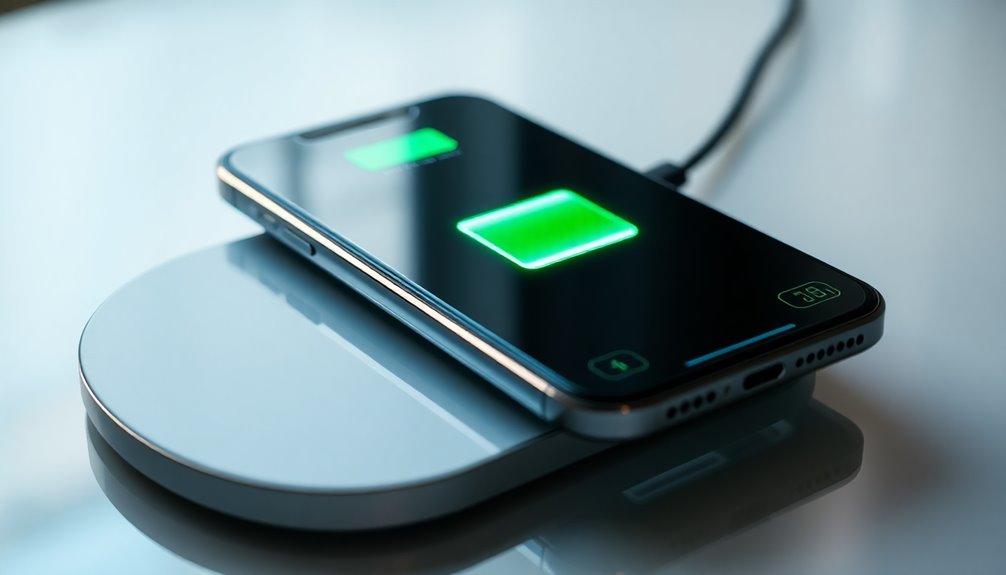
As you explore iPhone batteries, you'll find they rely on advanced lithium-ion technology, which offers faster charging and higher power density than older battery types.
Typically, after about 500 charge cycles, your iPhone battery retains around 80% of its original capacity, translating to about 2-3 years of average use.
However, factors like chemical aging and your charging habits can greatly affect battery health. You might notice that, on average, battery health declines by approximately 1% per month.
For instance, the iPhone 14 models maintain 80% capacity after 500 charge cycles, while the newer iPhone 15 models can achieve this after 1,000.
Optimizing your charging practices, like using the Charge Limit feature, can further extend battery lifespan and performance.
Performance Management Features

To guarantee your iPhone remains stable and usable, Apple introduced performance management features in iOS 11.3 and later.
These features assess your device's battery health periodically, preventing unexpected shutdowns based on its condition and usage patterns. When your battery's health declines considerably, performance management kicks in to adjust the device's performance, ensuring you can still use it effectively.
Consider these aspects of performance management:
- Monitors battery health regularly
- Adjusts performance based on temperature
- Considers charge state for ideal functionality
- Prevents unexpected shutdowns during heavy usage
You can disable performance management, but it's risky; doing so might lead to repeated shutdowns if your battery can't support the device's demands.
Stay informed to maintain your iPhone's maximum battery capability.
Tips for Extending Lifespan
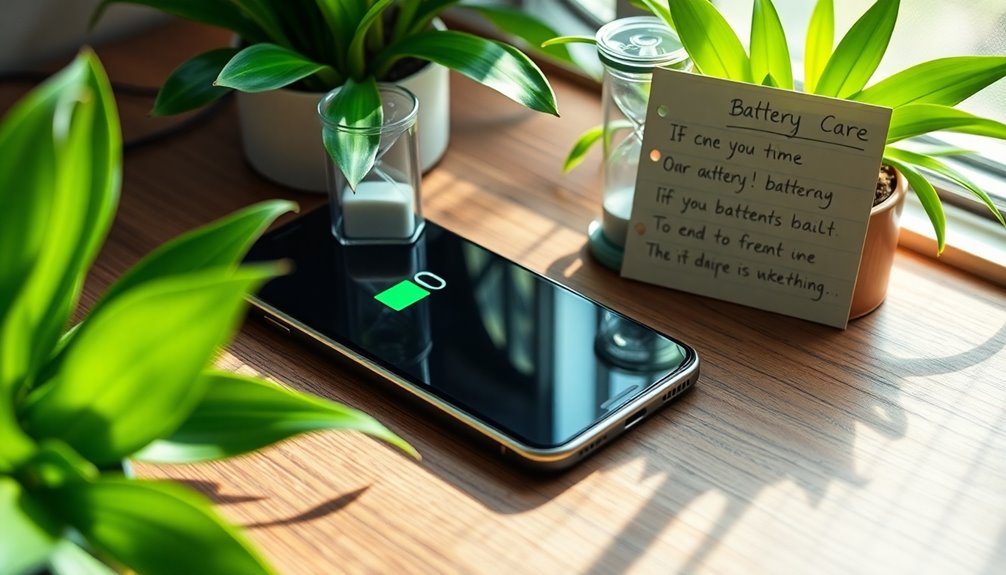
If you want to keep your iPhone's battery healthy for as long as possible, there are several practical tips you can follow.
First, avoid exposing your device to extreme temperatures; excessive heat can damage the battery while extreme cold drains it faster.
Regularly updating your iOS is essential, as updates often enhance battery performance and efficiency, extending battery lifespan.
Enable optimized battery charging to reduce wear by preventing prolonged full charges.
When your battery's low, use Low Power Mode to conserve energy by limiting background activity.
Finally, if you won't be using your device for a while, store it at around 50% charge. This practice helps retain battery capacity and prevents accelerated degradation.
Comparison With Android Devices
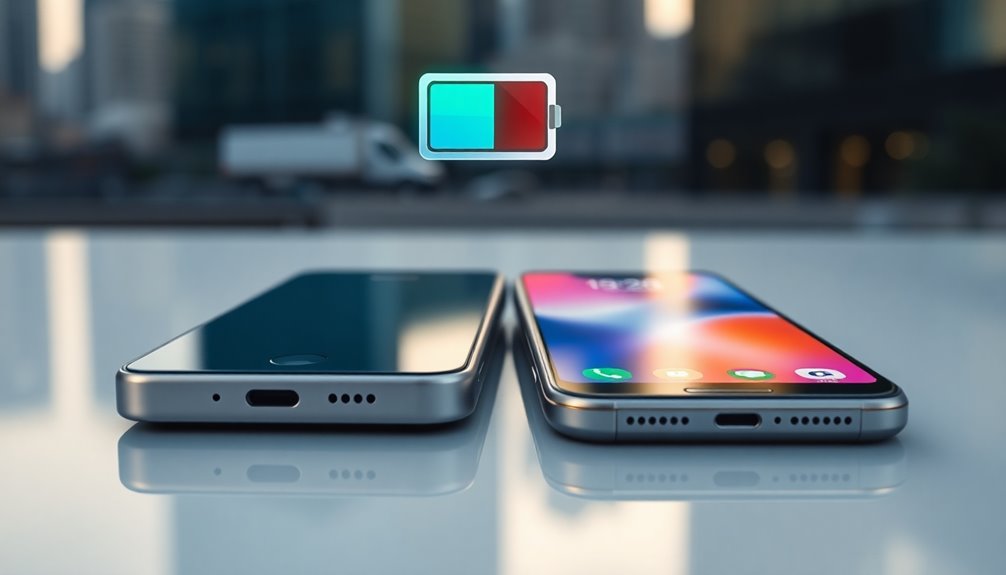
While both iPhones and Android devices have their strengths, the comparison often highlights significant differences in battery longevity and support.
iPhones typically enjoy around five years of software updates, ensuring peak battery performance throughout their lifespan. In contrast, Android devices often fall short.
Consider these factors:
- Update duration: iPhones last up to five years; high-end Androids, only three.
- Budget models: Many receive just one to two years of updates.
- Battery performance: iPhone batteries last around 2-3 years, while Androids can degrade in under two.
- Resale value: iPhones maintain a higher value due to longer support.
These points make iPhones more reliable regarding battery lifespan and overall experience compared to Android devices.
Frequently Asked Questions
How Many Years Will an Iphone Battery Last?
An iPhone battery typically lasts around 2 years, but this can vary based on how you use your device.
If you regularly charge it, you might notice a decline in performance over time.
Factors like temperature and charging habits play a big role too.
To keep your iPhone running smoothly, pay attention to its battery health.
When it drops to about 80%, it's probably time for a replacement to maintain peak performance.
What Kills Iphone Battery Life?
To keep your iPhone battery healthy, avoid exposing it to excessive heat, as it can cause significant damage.
Frequent full charges to 100% and letting it drain below 20% wear down the battery faster.
Also, running multiple apps simultaneously, especially with location services on, drains the battery quicker.
Using non-certified chargers can stress the battery, and outdated software might lead to inefficiencies that also contribute to faster battery drain.
Is 76% Battery Health Ok?
Did you know that a battery health of 76% means your iPhone's lost nearly a quarter of its original capacity?
While it's still functional, you're likely noticing shorter usage times between charges.
Apple suggests considering a replacement at 80% or lower, so at 76%, it's a good idea to keep an eye on your battery health.
Regularly check it in Settings, and be prepared for potential performance issues ahead.
What Ruins Iphone Battery the Most?
What ruins your iPhone battery the most?
Frequent full charges to 100% can speed up degradation, so try not to make that a habit.
High temperatures during charging or usage also take a toll on battery health.
Using your device while it's charging can add to the overheating problem.
Finally, background apps and constant notifications drain your battery faster, leading to more charge cycles that wear it out quicker.
Manage these factors for better longevity!
Conclusion
To summarize, understanding your iPhone's battery lifespan can help you make the most of it. For example, if you keep your phone charged between 20% and 80%, you could potentially extend its life greatly. By following proper maintenance tips and being mindful of usage habits, you can enjoy your device longer. So, treat your iPhone's battery well, and it'll reward you with reliable performance for years to come.

